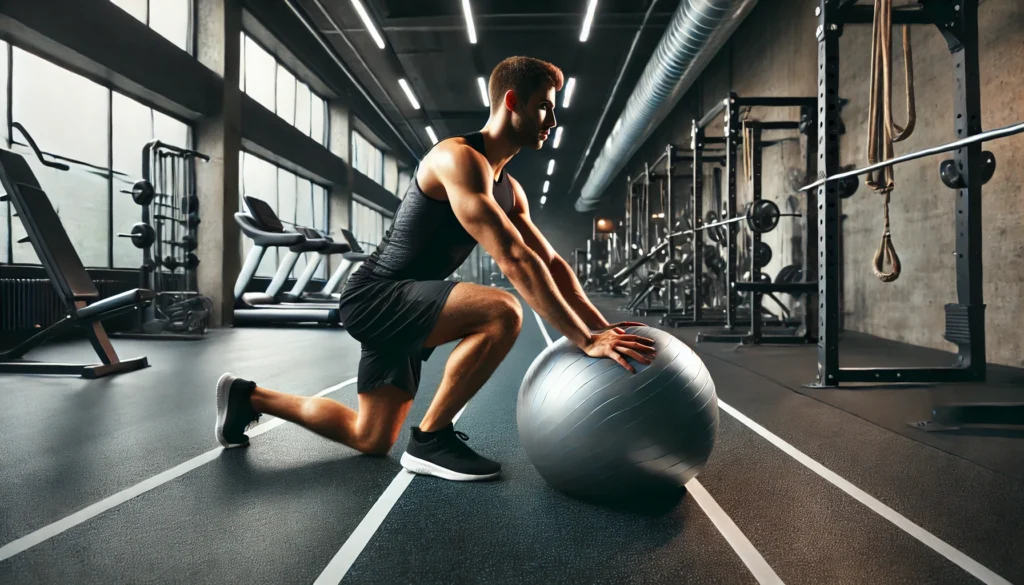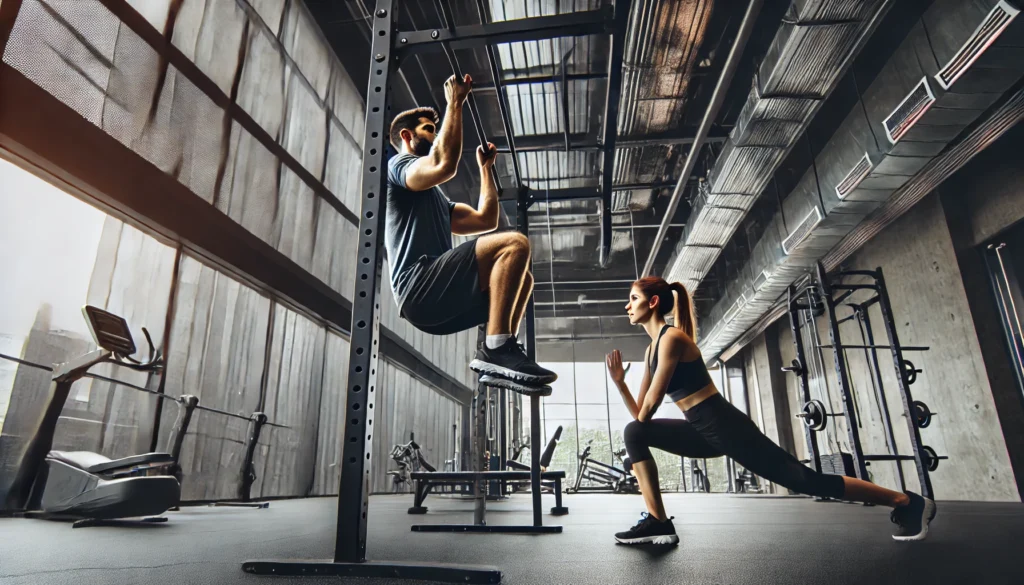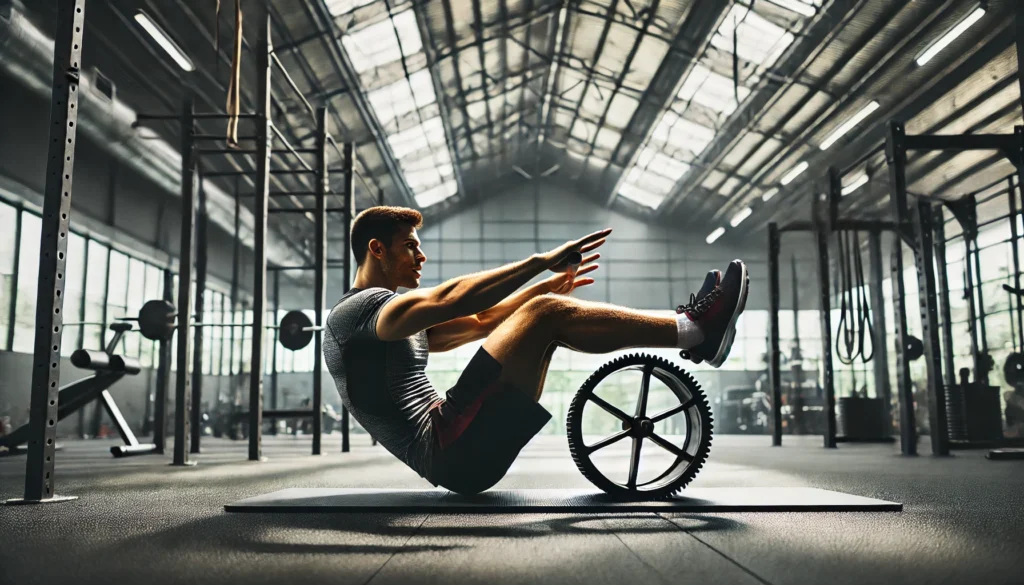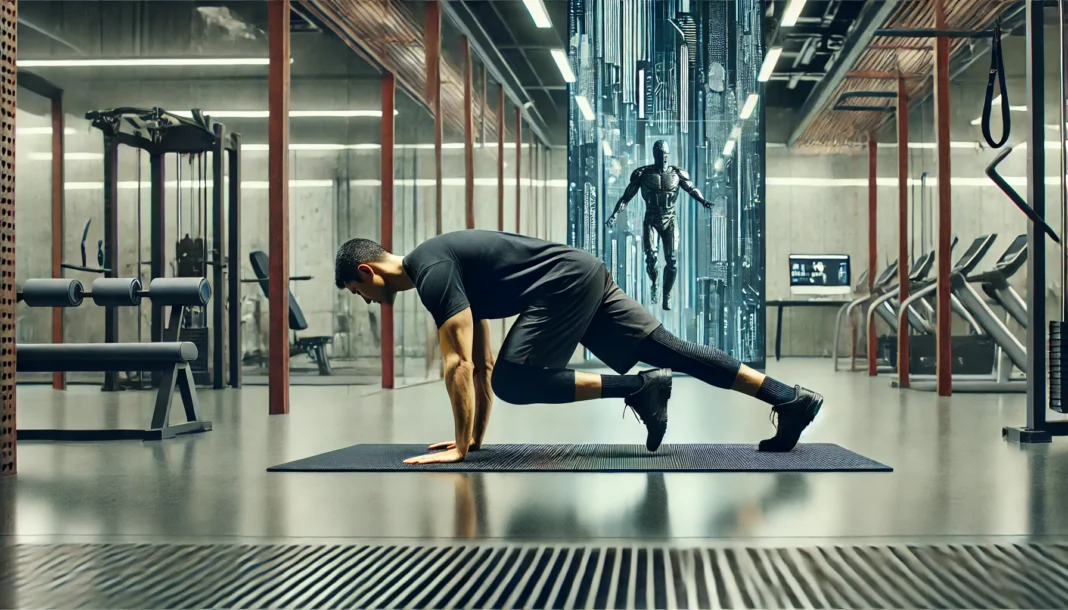Understanding the Role of Dynamic Core Exercises in Functional Strength
The core is the foundation of movement, providing stability, power, and coordination for nearly every physical activity. Whether engaged in athletic performance, daily activities, or general fitness, a strong core supports posture, enhances mobility, and prevents injuries. While traditional static core exercises, such as crunches and planks, play a role in core development, dynamic core exercises offer a more comprehensive approach. These movements engage multiple muscle groups, improve neuromuscular control, and enhance overall strength in ways that static exercises cannot.
Dynamic core exercises involve movement patterns that challenge the core in multiple planes of motion. Unlike conventional core training, which often isolates specific muscle groups, dynamic exercises require the core to stabilize and generate force simultaneously. This approach replicates real-world movements, such as twisting, reaching, and bending, making it highly effective for improving functional strength. A well-structured dynamic core workout targets rotational strength, anti-rotational control, and explosive power, creating a well-balanced and resilient midsection.
The benefits of incorporating dynamic ab workouts into a training routine extend beyond aesthetics. While many individuals pursue core training to achieve a toned midsection, the primary advantage of dynamic movements lies in their ability to enhance performance and injury prevention. The core functions as a link between the upper and lower body, transferring force and maintaining stability. Weakness in this area can lead to compensation patterns that increase the risk of lower back pain, hip imbalances, and poor movement mechanics. By engaging in dynamic ab exercises, individuals can reinforce proper posture, optimize movement efficiency, and reduce strain on surrounding muscles and joints.
Dynamic core exercises also play a crucial role in sports performance. Whether sprinting, jumping, or rotating, athletes rely on core strength to generate power and maintain stability. Incorporating explosive core movements, such as medicine ball slams and rotational throws, improves force production and agility. Additionally, anti-rotational drills enhance the body’s ability to resist unwanted movement, increasing overall control and precision. A well-rounded dynamic core workout integrates various movement patterns to maximize strength, coordination, and endurance.
For individuals seeking to enhance total-body fitness, dynamic core exercises provide a versatile and effective training method. These exercises can be incorporated into full-body workouts, strength training sessions, or mobility routines, offering flexibility in programming. By challenging the core through controlled and explosive movements, individuals develop greater body awareness, improved posture, and enhanced functional capacity. Understanding the science behind core engagement and movement mechanics allows for the creation of targeted, results-driven core training programs.
You May Also Like: Functional Strength Training: The Key to Mobility, Power, and Everyday Performance

The Science Behind Dynamic Core Training and Its Impact on Stability
The core is composed of several muscle groups that work together to provide stability and movement. These include the rectus abdominis, obliques, transverse abdominis, and deep stabilizing muscles such as the multifidus and pelvic floor. Unlike traditional core exercises that focus primarily on the superficial muscles, dynamic core workouts activate the entire core complex, improving both strength and coordination. This comprehensive engagement enhances movement efficiency and reduces the likelihood of injury.
One of the primary functions of the core is to resist unwanted movement. Anti-rotational exercises, such as Pallof presses and cable holds, train the body to maintain stability against external forces. This type of training is particularly beneficial for improving postural alignment and spinal health. Weak core stabilizers can lead to compensatory movement patterns, placing excessive strain on the lower back and hips. By incorporating dynamic ab exercises that challenge anti-rotational control, individuals develop a more resilient core that enhances overall movement quality.
Dynamic core training also improves proprioception—the body’s ability to sense its position in space. Movements that require balance, coordination, and rapid adjustments enhance neuromuscular communication, leading to more efficient movement patterns. Exercises such as stability ball rollouts, single-leg rotational reaches, and agility-based core drills train the body to respond quickly and accurately to changing demands. This heightened body awareness translates into improved athletic performance and reduced injury risk.
Another critical aspect of dynamic core exercises is their impact on movement efficiency. The core functions as a central hub for force transfer, allowing the body to move fluidly and with control. When core muscles are weak or underdeveloped, energy leaks occur, resulting in inefficient movement and decreased power output. Strengthening the core through multi-directional movements enhances force production, allowing individuals to generate power more effectively. This is especially important for athletes who rely on explosive strength, such as sprinters, martial artists, and weightlifters.
A well-designed dynamic core workout integrates both stability and mobility components. Core mobility is essential for maintaining a full range of motion and preventing stiffness. Exercises that encourage spinal articulation, such as controlled rotations and dynamic stretches, improve flexibility while reinforcing stability. By balancing mobility with strength, individuals can achieve optimal core function and movement freedom. This combination of stability, mobility, and strength ensures a well-rounded approach to core training that supports overall performance and injury prevention.

Developing a Comprehensive Dynamic Core Workout Plan
A structured dynamic core workout incorporates exercises that target different aspects of core function. By combining stability, power, and endurance-based movements, individuals can develop a well-rounded and powerful midsection. Each training session should include a variety of movement patterns to maximize effectiveness and prevent plateaus.
An effective dynamic ab workout begins with core activation drills to prepare the muscles for more demanding movements. Exercises such as dead bugs, bird dogs, and diaphragmatic breathing engage the deep stabilizers, enhancing neuromuscular coordination. Proper activation ensures that the core is primed for movement, reducing the risk of compensatory patterns that lead to strain or inefficiency.
Strength-based dynamic core exercises form the foundation of core training. Incorporating movements such as hanging leg raises, weighted Russian twists, and cable rotations challenges the core through resistance-based movement. These exercises improve muscular endurance and build the strength necessary for stability and power generation. Progressive overload is key to continual improvement, so gradually increasing resistance or complexity ensures sustained progress.
Power-focused exercises enhance explosive strength and agility. Incorporating dynamic movements such as medicine ball slams, kettlebell windmills, and plyometric core drills trains the body to generate force rapidly. These exercises are particularly beneficial for athletes and individuals engaged in high-intensity activities. By developing core power, individuals enhance overall athleticism and movement efficiency.
Endurance-based dynamic ab exercises improve muscular stamina and resilience. Movements such as extended plank variations, controlled rollouts, and high-rep core circuits challenge the core’s ability to maintain stability over time. This type of training is essential for activities that require sustained core engagement, such as running, cycling, and prolonged weightlifting sessions.
A complete dynamic core workout also includes flexibility and mobility components. Stretching and mobility drills ensure that the core muscles remain supple and free from restrictions. Incorporating yoga-inspired movements, spinal twists, and active recovery exercises promotes long-term joint health and movement efficiency. By maintaining a balance between strength and flexibility, individuals can achieve a core that is both powerful and adaptable.

Frequently Asked Questions (FAQ) on Dynamic Core Exercises
1. How do dynamic core exercises improve mental resilience and cognitive function?
Dynamic core exercises challenge not only physical endurance but also mental resilience by requiring concentration, coordination, and quick decision-making. When performing movements that involve balance and controlled instability, such as single-leg rotational reaches or stability ball rollouts, the brain must actively engage to maintain stability. This process enhances neural connections and improves cognitive function over time. Additionally, consistent participation in dynamic ab workouts has been shown to reduce stress and improve mood by stimulating endorphin release. The combination of mental engagement and physical exertion makes dynamic core exercises an effective tool for enhancing both brain function and emotional well-being.
2. What are the financial benefits of incorporating dynamic ab exercises into a fitness routine?
Engaging in dynamic ab exercises regularly can lead to significant financial savings by reducing the risk of injuries that require costly medical interventions. A strong and stable core minimizes lower back pain, hip dysfunction, and muscular imbalances, decreasing the likelihood of needing physical therapy, chiropractic adjustments, or even surgical procedures. Additionally, individuals who maintain core strength often experience fewer workplace-related injuries, reducing time off work and potential lost income. Investing in dynamic core workouts can also eliminate the need for expensive fitness programs, as many of these exercises can be performed using body weight or minimal equipment. Over time, prioritizing core strength can enhance overall health and reduce long-term healthcare expenses.
3. How do dynamic core workouts contribute to longevity and healthy aging?
A well-structured dynamic core workout enhances mobility, balance, and posture, all of which are essential for maintaining independence as individuals age. As people grow older, core strength naturally declines, increasing the risk of falls, poor posture, and musculoskeletal disorders. Engaging in dynamic core exercises that involve rotational stability, anti-rotational control, and balance training helps preserve functional movement. Exercises like standing cable chops and medicine ball throws keep the core engaged in a way that mimics everyday activities, making movements such as walking, reaching, and lifting more efficient. By maintaining a strong core, individuals improve their ability to perform daily tasks with ease, reducing the risk of injuries and maintaining quality of life.
4. How do dynamic ab workouts enhance financial performance in professional sports?
Professional athletes invest heavily in dynamic ab workouts because core strength directly impacts performance, injury prevention, and career longevity. Athletes in sports such as tennis, football, and martial arts rely on rotational power, which is developed through exercises like kettlebell windmills and cable rotations. Strengthening the core with dynamic core exercises ensures optimal energy transfer between the upper and lower body, leading to improved speed, agility, and power output. Additionally, reducing the risk of injuries through core stability minimizes time lost to rehabilitation, which can have significant financial implications for professional athletes. Many sports organizations now prioritize dynamic core workouts as part of their strength and conditioning programs to maximize athletic potential and financial return on investment.
5. How can dynamic ab exercises be integrated into a busy lifestyle?
One of the greatest advantages of dynamic ab exercises is their efficiency—many of these movements engage multiple muscle groups simultaneously, providing a full-body workout in a short amount of time. For individuals with tight schedules, incorporating core movements into daily activities can be a practical approach. For example, standing cable presses or resistance band rotations can be done during a quick gym session, while stability ball exercises can be performed at home. Additionally, short yet intense dynamic core workouts, lasting 10 to 15 minutes, can be incorporated into morning or evening routines. By making core training a priority, even those with demanding schedules can improve their strength and stability without needing lengthy gym sessions.
6. What industry trends are driving the popularity of dynamic core workouts?
The rise in popularity of dynamic core workouts can be attributed to the increasing emphasis on functional fitness and injury prevention across various industries. Many boutique fitness studios and training programs now focus on movement-based exercises that incorporate dynamic core exercises to enhance total-body coordination. Additionally, advancements in wearable fitness technology allow users to track core engagement and movement efficiency, further motivating individuals to prioritize core training. The sports rehabilitation industry has also seen a shift toward dynamic ab workouts, recognizing their role in improving postural control and reducing injury risk. As fitness trends continue evolving, more people are embracing dynamic core workouts as an essential component of overall health and performance.
7. How do dynamic core exercises contribute to metabolic efficiency and fat loss?
Unlike static core exercises, dynamic core exercises engage large muscle groups and require significant energy expenditure, increasing calorie burn both during and after the workout. Movements such as medicine ball slams, battle ropes, and hanging leg raises elevate heart rate, stimulating the metabolism and promoting fat oxidation. Additionally, dynamic ab exercises enhance lean muscle development, which in turn boosts resting metabolic rate. This means the body continues burning calories even after the workout has ended, making core-focused HIIT-style workouts particularly effective for fat loss. By integrating dynamic core workouts into a regular training routine, individuals can optimize their metabolism and achieve better body composition results.
8. How does a dynamic core workout improve overall athletic performance?
A dynamic core workout enhances athletic performance by improving core stability, power, and movement efficiency across various sports. Athletes rely on core strength to maintain balance, generate force, and execute explosive movements effectively. Exercises such as rotational medicine ball throws and unilateral planks mimic sport-specific motions, improving neuromuscular coordination and agility. Furthermore, dynamic ab workouts help athletes resist external forces, reducing the risk of injuries during sudden directional changes or impact situations. By incorporating dynamic core exercises into their training regimen, athletes develop greater control, faster reaction times, and improved overall performance.
9. Can dynamic ab workouts be modified for different fitness levels?
Yes, dynamic ab workouts can be adapted to suit all fitness levels, from beginners to advanced athletes. Beginners can start with foundational movements such as dead bugs, stability ball rollouts, and bird dogs to build core endurance and control. Intermediate individuals can incorporate resistance-based dynamic core exercises, such as cable twists and hanging knee raises, to challenge core strength further. Advanced athletes can engage in explosive dynamic ab exercises, such as plyometric core drills and medicine ball slams, to develop maximum power and speed. By adjusting exercise intensity, resistance, and movement complexity, dynamic core workouts can be customized to match individual fitness levels and goals.
10. How can proper breathing techniques enhance the effectiveness of dynamic core exercises?
Proper breathing is essential for maximizing the effectiveness of dynamic core exercises, as it enhances intra-abdominal pressure and core engagement. Many individuals unconsciously hold their breath during exercises, limiting core activation and reducing overall stability. Exhaling forcefully during exertion—such as during a twisting movement or plank variation—helps activate the deep core muscles, including the transverse abdominis. Additionally, diaphragmatic breathing improves oxygen flow and endurance, allowing individuals to sustain dynamic ab workouts for longer durations. By incorporating controlled breathing techniques, individuals can enhance their core training efficiency, reduce unnecessary tension, and improve overall movement quality.
Conclusion: Elevating Core Training with Dynamic Movement
Dynamic core exercises offer a powerful and effective approach to building a strong, stable, and functional midsection. Unlike static exercises, which focus primarily on isolated muscle contractions, dynamic ab workouts engage the entire core complex, enhancing movement efficiency and performance. By incorporating a variety of stability, power, and endurance-based movements, individuals can develop a resilient and powerful core that supports all aspects of physical activity.
A well-structured dynamic core workout provides benefits beyond aesthetic goals, improving posture, reducing injury risk, and enhancing overall movement quality. Whether training for sports, rehabilitation, or general fitness, core stability plays a crucial role in optimizing performance. Understanding the biomechanics of core engagement and integrating functional movement patterns ensures that training remains effective and results-driven.
By committing to a consistent dynamic ab exercises regimen, individuals can unlock their full physical potential, experiencing greater strength, control, and coordination. The integration of progressive core training, mobility work, and functional movement ensures that the body remains adaptable and resilient in all forms of activity. Through intentional and well-planned training, dynamic core exercises become a cornerstone of overall fitness, leading to long-term strength, mobility, and movement efficiency.
core stability training, advanced ab workouts, functional movement exercises, rotational strength, anti-rotational drills, explosive core training, total-body coordination, movement efficiency, core endurance training, spinal health and mobility, strength-based ab workouts, neuromuscular control, injury prevention exercises, athletic core conditioning, power-based core drills
Further Reading:
Core training and performance: a systematic review with meta-analysis
Influence of dynamic versus static core exercises on performance in field based fitness tests
Core Muscle Activity during Physical Fitness Exercises: A Systematic Review

